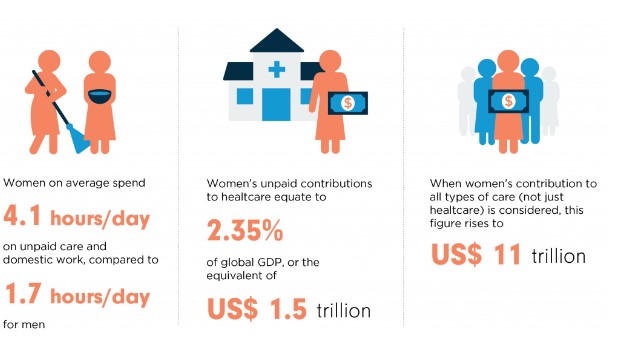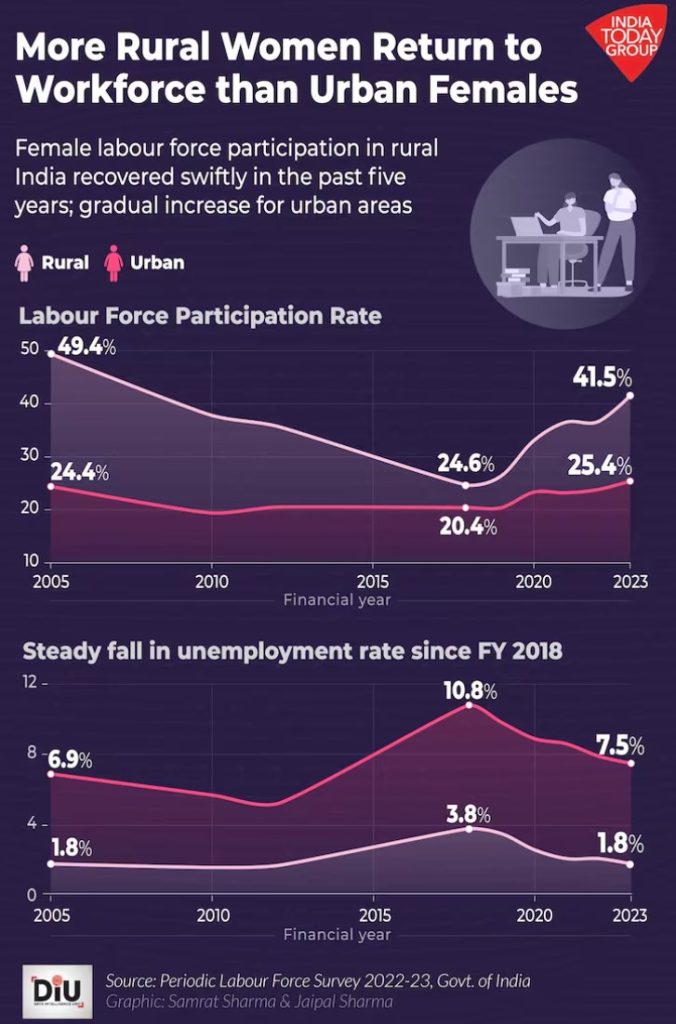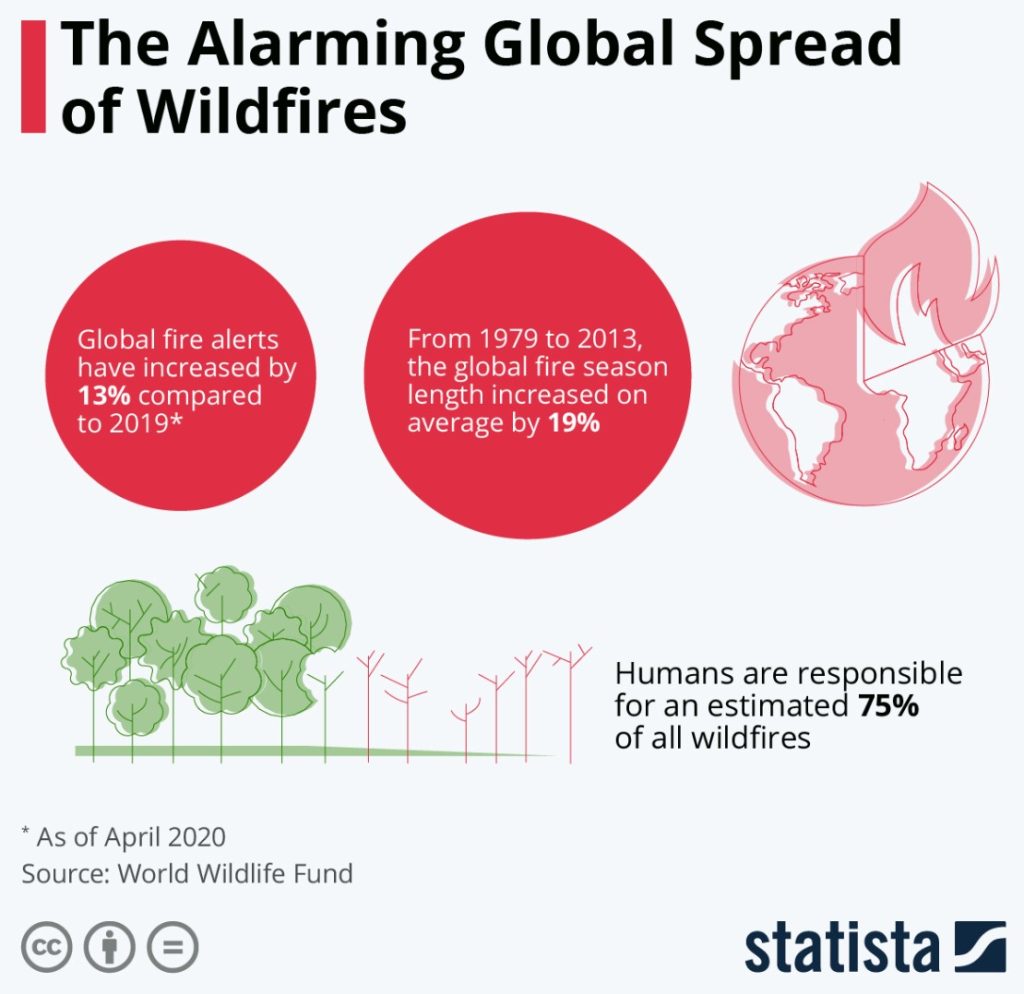CONTENTS
- The Unseen Burden of Women’s Unpaid Labour
- Forest Fires are a Grim Environmental Reality
The Unseen Burden of Women’s Unpaid Labour
Context:
In the early 1960s, Canadian short story writer Alice Munro, who recently passed away, achieved some success. A newspaper ran a patronizing article about her with the headline, “housewife who finds time to write short stories.” This dismissive tone did not deter Alice, who eventually won the Nobel Prize in Literature in 2013. Similarly, Claudia Goldin, who won the Nobel Prize in Economics in 2023, highlighted in her research that women’s career choices are often influenced not by their preferences, but by entrenched societal norms that create a “cult of domesticity,” idealizing women as unpaid caregivers.
Relevance:
GS1-
- Role of Women and Women’s Organization
- Population and Associated Issues
GS2- Welfare Schemes for Vulnerable Sections of the population by the Centre and States and the Performance of these Schemes
Mains Question:
Globally, women spend significant time on unpaid care work. In this context, discuss the factors governing women’s entry into workforce and the challenges they encounter in workforce. (15 Marks, 250 Words).
Unpaid Care Work:

- It’s not surprising that women perform about 76.2 percent of total unpaid care work hours, three times more than men (ILO).
- The Pacific and Asia show the starkest disparity, with men doing the least amount of unpaid care work (1 hour and 4 minutes daily).
- In 2018, 606 million working-age women were unable to join the labor market due to the burden of unpaid care work, compared to only 41 million men.
- The monetary value of women’s unpaid work can reach up to 40 percent of GDP in some countries (ILO).
- Social scientists argue that factors like childbearing, the age and number of children, rather than marriage, significantly hinder women’s participation in the labor market.
Female Labor Force Participation Rates (LFPR):
- Women aged 25-54 experience a significant disparity in labor force participation rates (LFPR), with only 61.4 percent participation compared to 90.6 percent for men (World Bank, 2022).
- In single-mother households with at least one child under six, economic necessity increases women’s LFPR to about 65.8 percent.
- However, this rate drops to 48.7 percent when mothers live with a partner and a young child, due to the prevailing “male breadwinner” syndrome (UN Women).
- Despite this, “breadwinner moms” carry a heavier domestic load, even when they out-earn their husbands (Pew Research Center).
Motherhood Penalty:
- The “motherhood penalty” remains strong in the USA, with mothers six times less likely to be recommended for hire than non-mothers, and 3.35 times less likely than child-free men.
- Additionally, mothers are 114 percent more likely than fathers to take a career pause (Mom Project, US).
- When a child is sick, women are more likely to take time off because they are often paid less, making it economically sensible (PNAS, 2023).
- A report by the British trade union association TUC highlights that men do not face penalties as parents. In fact, fathers who work full-time receive a wage bonus of 22 percent when they have children.
- This disparity does not arise because mothers become less productive or fathers work harder, but due to employer expectations influenced by cultural biases regarding gender and work, as noted by Michelle Budig, a sociology professor at the University of Massachusetts, Amherst.
- Her research further revealed that men’s earnings increased by more than 6 percent on average when they had children and lived with them, while women’s earnings decreased by 4 percent for each child they had (National Longitudinal Survey of Youth, US, 1979 to 2006).
Women’s Entry into the Labor Market in Urban and Rural India:

- A study using Life History Calendar (LHC) data from Karnataka and Rajasthan found that rural women might not face a motherhood penalty in terms of labor market participation due to the prevalence of informal and flexible employment, which better accommodates childcare responsibilities compared to urban or more formalized settings (Gautham 2021).
- Analysis of data from the Employment-Unemployment Schedule (EUS) of the NSS from 2004 to 2012 revealed that rural motherhood wage penalties are nearly zero, whereas urban women face a substantial penalty of about 18 percent of total wages.
- Highly educated women or those in regular salaried positions incur a larger wage penalty after motherhood than their less educated or casually employed counterparts (Wilde et al. 2010).
- First-time fathers, both rural and urban, do not experience negative wage effects after the birth of their children.
Lack of Childcare Facilities:
The lack of childcare facilities is a major barrier to gender equality in job markets (UN Women). A macro-econometric analysis of childcare policies in 18 OECD countries (1980-2007) highlighted that high levels of employment protection and longer paid leave are crucial for the survival of working mothers (Thévenon, 2013).
Way Forward:
- In 2016, an analytical study by ITUC in seven high-income OECD countries estimated that investing 2 percent of GDP in the care industry could create nearly 13 million new jobs in the US, 3.5 million in Japan, nearly 2 million in Germany, 1.5 million in the UK, 1 million in Italy, 600,000 in Australia, and nearly 120,000 in Denmark.
- This investment could also boost women’s employment rates by 3.3 to 8.2 percentage points, compared to men’s increase of 1.4 to 4.0 percentage points.
- Subsequent research by ITUC in emerging economies, including Brazil, Costa Rica, China, India, Indonesia, and South Africa, confirmed that the same level of investment in the health and care sector would create nearly 24 million new jobs in China, 11 million in India, approximately 2.8 million in Indonesia, 4.2 million in Brazil, over 400,000 in South Africa, and 63,000 in Costa Rica.
- The ILO’s recent global “Care at Work” report urged that to reduce the gender employment gap by 7 percentage points and the monthly earnings gap to 1.8 percent by 2035, a sustainable annual investment of over $204 billion, averaging 5.8 percent of GDP per country, is needed for universal childcare and long-term care services.
Conclusion:
Feminist economists like Elson and advocates of the Purple Economy such as Ilkkaracan emphasize recognizing care as “an indispensable component of human well-being” and call for a “caring and gender-equal economic and social order,” with caregiving responsibilities shared between the state and households, and between men and women. It is crucial for the world to meet its SDG 2030 commitments and ensure women’s economic justice and equality through appropriate policy formulations and resource allocations.
Forest Fires are a Grim Environmental Reality
Context:
The rampant wildlife fires in Uttarakhand have captured headlines over the past month. These forest fires not only signify a dire environmental issue but also highlight societal flaws characterized by romanticism and unchecked freedom. Compounding this is a lack of discipline and respect for the law, painting a troubling picture.
Relevance:
GS3- Disaster Management
Mains Question:
Analyse the reasons behind the recent forest fires in Uttarakhand. What can be done to compensate for the lack of a thorough analysis of the occurrence and prevention of forest fires in India. (10 Marks, 150 Words).
Reasons Behind the Forest Fires in Uttarakhand:
- The devastating forest fires in Uttarakhand stem from three main factors: environmental pollution from flawed living standards, a culture of unchecked freedom among the youth, and a weak administrative system unable to enforce existing laws.
- Global warming, largely driven by the extensive use of hydrocarbon aviation fuels, is a major contributor to wildfires, similar to those frequently seen in Australia and the USA. Uttarakhand’s fires parallel those in these countries.

- The naturally occurring Chir Pine trees in the state are prone to fires, but the primary trigger is atmospheric warming caused by vehicular and industrial pollution.
- Uttarakhand hosts a significant pharmaceutical industry, which contributes heavily to pollution due to its extensive use of chemical raw materials.
- Another factor is the mischief of delinquent youths, as evidenced by the arrest of three individuals from Bihar who set fires in Uttarakhand’s Chamoli district for social media attention.
- Lastly, rampant violations of environmental protection laws through illegal tree felling and construction practices also play a crucial role in these fires.
Lack of Accurate Analysis:
- The unfortunate reality is that while the media extensively covers such incidents, it offers superficial and simplistic explanations for their causes.
- There is a lack of in-depth analytical reports that could provide a comprehensive understanding of their occurrence and prevention.
- Wildfires are a common occurrence in Australia, the USA, and some European countries, yet remain perplexing.
- Even in these developed and well-administered regions, geologists and meteorologists do not have complete or accurate explanations for these phenomena.
Arriving at Scientific Explanations:
- However, it is neither difficult nor impossible to arrive at thorough scientific explanations. This can be achieved through the application of the scientific principles found in Vedic Physics, which offers a precise and comprehensive understanding of all natural phenomena.
- Vedic Physics provides a holistic explanation that encompasses the five primordial elements: earth, water, fire, air, and ether.
- It covers everything from observable physical events to the innermost levels of the subtlest material existence.
- In contrast, Modern Physics, as taught in Western academia, only explains phenomena that can be measured visually, audibly, or through other measurable means.
- It lacks concepts of sub-nano material entities such as mind (Anastasia), intellect (mahatatva), and divinely originating rays (rashmiyan), and has little to no understanding of ether.
- The discourse in our traditional scientific literature, dating back 15,000 years, comprehensively unravels the mysteries of material nature.
- Texts such as the Aitreya Brahman and Shathpath Brahman contain core scientific principles that, if studied and applied, can refine our living paradigms and technologies in accordance with Vedic sciences.
- This approach can lead to environmentally friendly construction practices and help prevent natural disasters like wildfires.
Conclusion:
Wildfires primarily occur due to the production of excessive heat and the disruption of the water balance in the environment, caused by the extensive burning of hydrocarbons. According to Vedic sciences, the primordial water element counteracts the primordial fire element. Vedic sciences offer solutions to these problems. To ensure safety, stability, and sustainability in our world, we must refer the rich traditional scientific literature along with the modern Western scientific approaches before it is too late.




